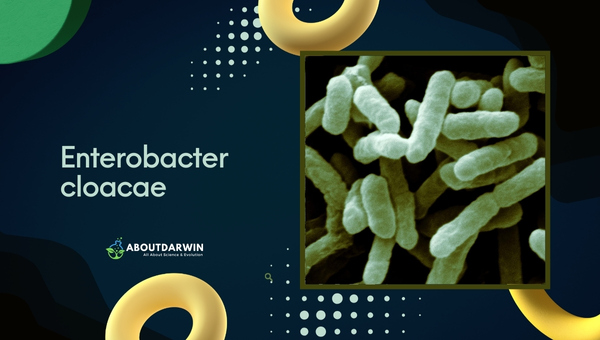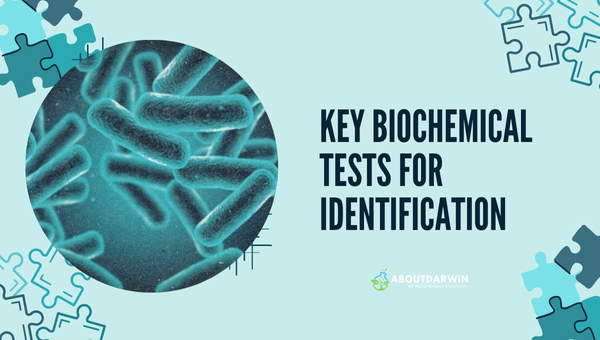Physical Address
304 North Cardinal St.
Dorchester Center, MA 02124
As a microbiologist, one of the fascinating bacterial species that I often encounter is Enterobacter cloacae. This unsung ‘baddie’ is a Gram-negative, rod-shaped bacterium that belongs to the Enterobacteriaceae family.
Known for its wide distribution in nature and medical implications, it’s found in varied environments like water, sewage, soil, and food, as well as across various hospital settings.
E. cloacae has been associated with Nosocomial infections (Infections that start in hospitals), urinary tract infections, and opportunistic systemic diseases such as sepsis and meningitis.
Accurate identification of this bug is crucial in clinical diagnosis and treatment; hence, biochemical tests are vital for its detection and proper management. Dive with me into E.cloacae identification using these biochemical tests!
Contents
Before we move ahead with our discussion on Enterobacter Cloacae’s biochemical tests and its identification methods, let’s have a quick overview of what makes Enterobacter cloacae so interesting.

| Basic Characteristics | Properties (Enterobacter cloacae) |
|---|---|
| Pigment | Negative (-ve) |
| Urease | Negative (-ve) |
| Catalase | Positive (+ve) |
| Motility | Motile |
| Shape | Rods |
| Nitrate Reduction | Positive (+ve) |
| Gelatin Hydrolysis | Negative (-ve) |
| Fermentation of D-Mannitol | Positive (+ve) |
| MR (Methyl Red) | Negative (-ve) |
| VP (Voges Proskauer) | Positive (+ve) |
| H2S | Negative (-ve) |
| Indole | Negative (-ve) |
| Citrate | Positive (+ve) |
| Flagella | Positive (+ve) |
| Gas from glucose | Positive (+ve) |
| OF (Oxidative-Fermentative) | Facultative Anaerobes |
| Growth in KCN | Positive (+ve) |
| Gram Staining | Negative (-ve) |
Enterobacter cloacae is a Gram-negative bacterium with an intriguing rod shape. It’s an integral part of the digestive system in us humans – truth be told, it’s staring right back at us from our mirrors every morning – we’re all carriers.
An infection with E.cloacae can cause all sorts of health issues, ranging from urinary tract infections to respiratory issues, septicemia (blood poisoning), and skin infections. For people with weakened immune systems like infants or seniors or those in healthcare settings like hospitals or nursing homes – these bugs can present severe challenges.
This is why correct identification of this bug is critical using biochemical tests. After all, how are physicians supposed to fight off an enemy if they aren’t sure what it is? And given that E.cloacae has a knack for becoming resistant to various antibiotics – correct identification becomes even more crucial!
Also Read: Proteus Mirabilis: Understanding Biochemical Identification
Characteristics of Enterobacter Cloacae are as follows:
These are just some glimpses into how intricate this bacterium is biochemically – making its’ correct identification quite an interesting challenge.
For a microorganism that causes such grief, you’d be surprised at just how tiny Enterobacter cloacae actually is. Picture a single grain of sand, but go even smaller – about 100 times smaller. That’s the fascinating world of these bacteria we’re venturing into!
Right from its structure, E.cloacae screams unique. Like other bacteria that play double roles as both benign gut dwellers and occasional pathogens—called opportunistic pathogens—E. cloacae possesses a rod-like shape, which is common among the species belonging to the Enterobacteriaceae family.
On closer examination – by which I mean zooming in much more than your regular microscope would permit—you’d see that E.cloacae belongs to a group called Gram-negative bacteria. In simpler terms? When splashed with a certain purple stain (the Gram Stain), it doesn’t retain the color—a contrast compared to its Gram-positive brethren.
This particular attribute sets the stage for our understanding of why this bacterium is so resilient. This distinct cellular wall of E.cloacae – and mind you, I definitely oversimplified it there—doubles up as both armor against drugs looking to take it down and then also working as clever camouflage against our immune cells seeking out invaders!
Now, you’re probably wondering, “How on earth do scientists identify this tiny microbe?” Don’t worry; I’ve got you covered.

Firstly, we have the indole test. This procedure is like sorting out M&M’s by color – it determines if our critter E. cloacae can produce indole from tryptophan.
So basically, we give the bacterium a lovely meal of peptone broth (which contains tryptophan), and if it digests the tryptophan to produce indole – bingo! We’ve got a positive result! Now, here’s the kicker: E.cloacae usually doesn’t produce indole – this goose prefers its unique path, which assists in its identification.
Next up are two fancy-sounding tests – The Methyl Red (MR) and Voges-Proskauer (VP) tests. They sound like they should be part of some secret sci-fi organization, but these guys are actually all about glucose metabolism.
Essentially, these tests determine how our bug metabolizes glucose – either through the mixed acid fermentation pathway (which gives us a red color in the MR test) or via producing acetoin by the Butylene glycol pathway (resulting in a pink-red brown color in the VP test). Our beloved bug, E.cloacae –typically exhibits negative results for MR and positive for VP!
Finally, we have the citrate utilization test, which is essentially a “food preference” check for bacteria. It answers whether Enterobacter cloacae can use citrate as an exclusive carbon source or not with minimal nutrients available to see how well they adapt. Basically, this is like seeing if someone could survive eating only olives.
Here’s another curveball: unlike quite a few microbes that cannot utilize citrate, E.cloacae turns out to be a veritable gourmand – happily using citrate and giving us blue-colored positive results!
These tests are the detective techniques scientists use to identify Enterobacter cloacae. The indole test, methyl red test, Voges-Proskauer test, and citrate utilization test – all come together like puzzle pieces that, when assembled correctly, give us a picture of E.cloacae’s identity.
So, next time you hear about these bugs in the news or during your hospital visit – you can appreciate the hard work that goes behind correctly identifying and treating such elusive microbes.
Also Read: Arteries and Veins: Understanding Differences and Impacts on Health
Ah, the vast landscape of science never ceases to amaze me! With a constant flurry of innovations cropping up every day, we have broken cognitive ceilings and facilitated more reliable and quicker methods of identifying Enterobacter cloacae. Let’s explore two such cutting-edge techniques.
First up, we have DNA analysis, particularly Genomic sequencing. Now, this marvel lets us dive deep into the genetic material of E. cloacae that serves as its blueprint—its DNA. You see, certain sections or sequences are unique to each species — kind of like a fingerprint!
With genomic sequencing methods like Whole Genome Sequencing (WGS), these differences become clear as day! This technique also helps in differentiating between closely related bacterial species – something traditional biochemical tests may sometimes fail at.
This sophistication not only streamlines the process but also enhances our understanding of how Enterobacter cloacae can morph or adapt over time – giving us insights into potential vulnerabilities that could be exploited for treatment!
Then there’s Matrix-Assisted Laser Desorption/Ionization Time-of-flight (MALDI-TOF) mass spectrometry– quite a mouthful, I know! But don’t let the name scare you off – it’s absolutely fascinating!
In simple terms, this method uses laser beams (cool, right?) to ionize bacterial proteins and launch them toward a detector plate– hence ‘time-of-flight.’ Each bacteria produces a unique flight pattern or spectral signature, which can be identified by high-tech software.
The beauty is in its efficiency – results are speedier than traditional biochemical tests ever could be while remaining precise each time!
These advanced identification techniques demonstrate how far science has come in fighting against microbial foes like Enterobacter cloacae! The investment in these innovations emphasizes just how crucial it is to identify these little critters correctly – after all, knowledge is the first line of defense!
These are the Importance of Identifying Enterobacter Cloacae :
Overall, identifying Enterobacter cloacae accurately shapes both individual patient care and broader healthcare landscape actions.
Also Read: Streptococcus Pneumoniae: Identification & Biochemical Tests
Enterobacter usually has a negative methyl-red test, a positive Voges-Proskauer test, can use citrate as a carbon source, can grow in Moller’s KCN medium at 30 °C, and are ornithine positive, although ‘Enterobacter agglomerans complex’ is ornithine decarboxylase negative.
The gold standard for diagnosing Enterobacter infections is the utilization of cultures. It is recommended that at least two sets of blood cultures be obtained, one aerobic and one anaerobic bottle. MacConkey agar can be used to determine if the specimen is lactose fermenting.
The genus Enterobacter ferments lactose with gas production during a 48-hour incubation at 35-37 °C in the presence of bile salts and detergents. It is oxidase-negative, indole-negative, and urease-variable.
The most important test to document Enterobacter infections is culture. Direct Gram staining of the specimen is also very useful because it allows rapid diagnosis of an infection caused by gram-negative bacilli and helps in the selection of antibiotics with known activity against most of these bacteria.
In our quest to delve deeper into the microscopic world of Enterobacter cloacae, we’ve embarked on a scientific journey.
We’ve unmasked the bacterial villain, unveiled its unique characteristics and impactful role in human health, and dissected the vital tools used for its identification.
By recognizing these invisible wars fought within our bodies, we now comprehend the significance these bacterial warriors hold in shaping our overall well-being.
But this isn’t an end – it’s merely a new beginning. Each piece of knowledge paves the way for more questions and finer exploration and begins another chapter in this never-ending saga between humans and bacteria.